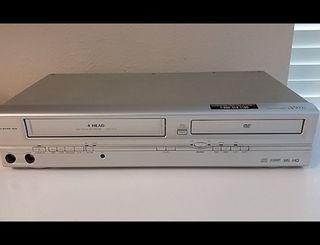RIP, VCR: Last Model Rolls Off the Line

Long after the Sonys, Samsungs and Panasonics of the consumer electronics world had moved on from VCRs, Japan’s Funai Electric Co. remained the lone holdout, continuing to churn out analog consumer hardware in a decidedly digital world.
That ended in July, after Funai announced it would cease production of VCRs, effectively ending the life of what may go down as one of the most transformative pieces of consumer electronics to ever hit the market.
According to translated reports from the Japanese newspaper Nikkei, a combination of a lack of demand and a lack of parts to make the hardware forced Funai’s decision to stop production. And while the news was met with a few lighthearted post-mortem stories for the VCR and VHS, more than one longtime home entertainment expert put a more serious tone to the final passing of the format.
“For the first time, the consumer was completely in charge,” T.K. Arnold, publisher and editorial director of entertainment trade magazine Home Media, said of the VCR. “Whatever you stuck in that box is what you watched, and you picked that. That was revolutionary, because it had never been done before. You had [previously] always been at the whim of somebody else.”
Six years before the debut of DVD in 1997, Arnold was an editor for Home Media’s predecessor, Video Store magazine, and VCRs were pretty much the only name in the home entertainment game then, with U.S. Census data at the time showing 84% household penetration of the format in American homes the year of DVD’s debut. Only the TV itself was more ubiquitous in the home entertainment space. And while a VCR can’t work without a TV, it served as a bigger precursor to today’s consumer content behaviors than those old cathode ray tube sets, Arnold argues.
“Today we would call the VCR a ‘disruptive technology’ and it certainly was,” agreed Sean Bersell, senior VP of public affairs for the Entertainment Merchants Association (EMA), an international home entertainment group formerly known as the Video Software Dealers Association (VSDA), first formed to back video stores’ right to rent VHS. “It totally changed the way we consume film entertainment. No longer were people subject to the selections and schedules of the local movie theater or television—we could watch what we wanted to watch when we wanted to watch it.”
Look around at today’s on-demand content world, where consumers can watch what they want, whenever they want it. That reality can be traced back to the late-’70s proliferation of VCRs, Arnold and Bersell said.
Broadcasting & Cable Newsletter
The smarter way to stay on top of broadcasting and cable industry. Sign up below
“It’s all been a steady progression toward watching what you want, when you want, and that’s been the story of home entertainment, a constant improvement in giving the consumer control without being at the whims of broadcast and scheduling,” Arnold added.
And Bersell did manage to add a lighthearted thought on the death of a format whose impact is still felt today: “The VCR is now obsolete, but the disruption it created continues to transform home entertainment in ways we could not have imagined, when all we wanted to do [then] was set the clock on the device.”
